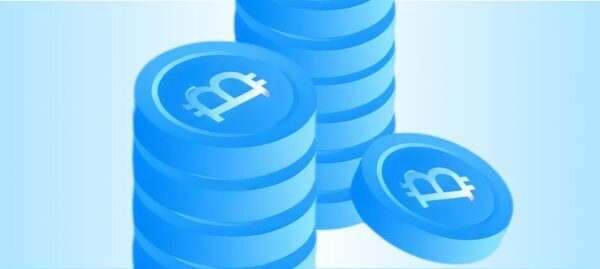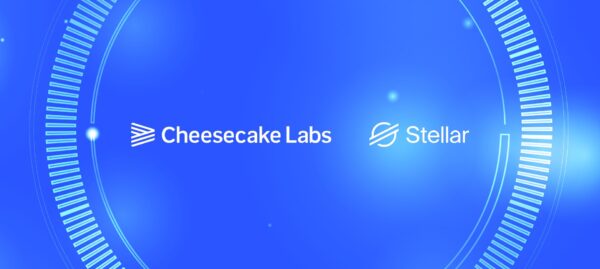What Are Stablecoins, and Why Should You Know About Them?
Gabriel Soares | Nov 26, 2025

Asset tokenization lets banks and fintechs boost liquidity while reducing costs and reaching a wider retail audience.
Though fairly new, it’s off to a strong start. The bullish tokenization market topped $2.77 billion in 2022 and should reach $5.6 billion by 2026. Projects are launching left and right — Santander’s Agrotokens, Sygnum’s Art Security Tokens, and Nigeria’s national wallet are just a few examples.
Touted as the key to democratizing finance and unlocking $16 trillion of illiquid assets, tokenization sure looks promising. Experts even predict that tokenized assets could make up 10% of the world’s GDP by 2027.
But beyond the hype, what real strategic value does it offer banks and fintech companies?
In this blog, we talk about what asset tokenization means and how it’s changing finance as we know it.
To tokenize means to create a digital representation of a tangible and tradable asset using blockchain technology. This digital representation — called a security token — can represent anything of value, from equity shares to art.
Tokenization can be broadly classified into two categories — blockchain and non-blockchain, each with its pros and cons depending on the intended use.
Blockchain tokenization is more suitable for assets that require high trust and auditability. On the other hand, non-blockchain tokenization is easier and more affordable for assets that do not need the same level of transparency and security.
There are four types of blockchain tokenization:
Non-blockchain tokenization uses traditional databases instead of blockchain platforms. While non-blockchain tokens are faster and simpler to create than blockchain tokens, they are usually less secure and transparent. There are three ways to create them:
For financial institutions, tokenization makes it easier to safely buy, sell, transfer, and fractionalize asset ownership. Unlike private and isolated ledgers, a publicly accessible blockchain allows interoperability among market participants, so transactions are executed faster, and balances are automatically updated. And because security tokens can embed the holder’s rights and legal responsibilities, transactions have greater transparency.
Cost savings is another selling point, as tokenization can be 35% to 65% cheaper than traditional securitization. What’s more, it lets banks tap new markets. Highly divisible and highly liquid tokens allow smaller investment amounts and shorter investment periods. This empowers more customers to access opportunities that were once restricted to the wealthiest clients.
Moreover, digital tokens have the advantage of being programmable. They can be coded to automate dividend or interest payments, for example.
They can represent voting rights, and voting can be done via the blockchain infrastructure. Banks can even create funds that automatically invest in a range of tokens based on pre-established criteria. The possibilities are endless.
Almost any asset class can be digitized and traded on blockchain platforms — from traditional assets like bonds and equity to more exotic use cases like artwork and sports teams. For example:
Illiquid assets (such as artwork and wine) can be tokenized to provide clear provenance records, allow lending against such assets, and facilitate price discovery.
Interestingly, fine wines became the first tokenized securities under Switzerland’s new blockchain law in 2021 when Fine Wine Capital AG tokenized them on Sygnum’s Desygnate platform.

Asset tokenization is seeing increased trading volume, positive sentiment from stakeholders, and recognition from governments and monetary authorities. It’s poised to transform finance by equalizing market access and promoting fairness and security.
But regulations and legal frameworks have yet to catch up, creating challenges that limit the potential of a tokenized economy.
There are no universally recognized accounting regulations or ethical standards for developing and managing tokenized assets. The borderless nature of blockchain technology also poses a challenge.
Tokenization also potentially violates current regulations on cross-border data flow, intellectual property rights, and capital controls. All these factors create uncertainty and expose investors to potential malpractices.
Global policymakers have yet to establish legal frameworks that cover all aspects of digital asset management. But the situation is improving.
Organizations like the Financial Action Task Force, Financial Stability Board, International Organization of Securities Commissions, and Bank of International Settlements are collaborating to establish worldwide standards and guidelines for this purpose.
The blockchain’s decentralized nature makes it secure against cyberattacks, but the same cannot be said for smart contracts, which have become prime targets for hackers.
Smart contracts possess three fundamental characteristics — transparency, immutability, and the ability to express value. These characteristics are crucial for their operation, but they also create security risks.
In February 2022, the Wormhole cross-chain bridge attack drained $320 million off Solana and Ethereum. DODO DEX was also hacked in March of the same year, resulting in approximately $3.8 million in cryptocurrency losses.
Without proper auditing and security measures, smart contract investments can be stolen and irreversibly lost. Diligent auditing is critical in protecting against smart contract funds.
The muddiness of cryptocurrency tax regulations is a significant issue for stakeholders who buy, sell, and trade digital assets. Due to cryptocurrencies’ decentralized and global nature, tax laws vary widely across different jurisdictions, creating confusion on how to comply with tax obligations.
This ambiguity can lead to unintended tax liabilities and penalties. It also creates hesitation in the crypto market, deterring some investors from participating.
Clearer guidelines for taxing digital assets are needed as cryptocurrencies become more mainstream. This will provide direction for stakeholders, ensure compliance, and generate revenue for governments.
Asset tokenization has the potential to revolutionize the financial system by creating a more efficient and democratic structure. Financial institutions need to adapt to a growing token economy where cryptographic technology replaces third-party intermediaries as keepers of trust. Those who proactively engage with this technology, plan for the future, and adapt to the new realities will thrive.
Cheesecake Labs provides blockchain consulting services for banks and fintechs that need help identifying their requirements, choosing the right technologies, and implementing an asset tokenization solution.
Cheesecake Labs delivers consulting and development solutions in asset tokenization, stablecoins, tokenomics, CBDC, smart contracts, Web3, dApps, NFT, and decentralized finance.
Our blockchain services are designed for fast-growing startups, fintechs, and banks that want better business outcomes — from revenue growth and cost reduction to consumer impact.

As the top blockchain company(LATAM), we’ve worked with banks and fintechs in various regions. Our team worked with BITT to create an international DCMS, enabled TASCOMBANK to distribute the digital version of the Hryvnia on the Stellar public network, and helped Mercado Bitcoin with the Central Bank of Brazil’s LIFT project.
Cheesecake Labs also improved and optimized Solana’s largest NFT marketplace web portal and worked with the Stellar Development Foundation to develop Stellar Aid Assist. This platform uses digital technology for humanitarian aid. We likewise collaborated with eCurrency and ANZ Australia on a use case for CBDC.

While we build blockchain applications, wallets, and exchanges on different platforms, we have particular expertise in Stellar.
Stellar is a blockchain network specifically designed for asset issuers, enabling fine-grained control over asset ownership at the protocol level. It also allows the creation of fully permissioned assets using SEP-8, a protocol that lets issuers define custom policies down to the ledger transaction level through an off-chain authorization server.
As an official Stellar integration partner, we know the network and ecosystem like the backs of our hands. Contact us to discuss your project. We can’t wait to work with you!
Asset tokenization can be a transparent and credible fundraising method that offers solid profitability when executed correctly. It can enhance liquidity by allowing fractional ownership, letting owners charge a fair market price.
1. Determine the asset that you want to tokenize, whether it’s real estate or fine art.
2. Analyze the market to confirm that there is a demand and enough interest in owning that asset.
3. Establish ownership rights to determine the number of tokens needed and who is entitled to them.
4. Select a blockchain platform to issue the tokens.
5. Develop a smart contract that specifies the number of tokens, token price, and distribution rules.
6. Create digital tokens and assign them to the appropriate addresses on the blockchain.
7. Offer the tokens for sale to investors, either directly or through crowdfunding.
The tokenization process is complex and technical. If you need help selecting and implementing appropriate technologies, it’s a good idea to work with asset tokenization companies that provide blockchain consulting services.

With several years of experience in customer services, my background goes through several areas of technical support, from incident handling and real-time support to on-site service delivery and Knowledge Management through the KCS Methodology, as well as project and product management.


